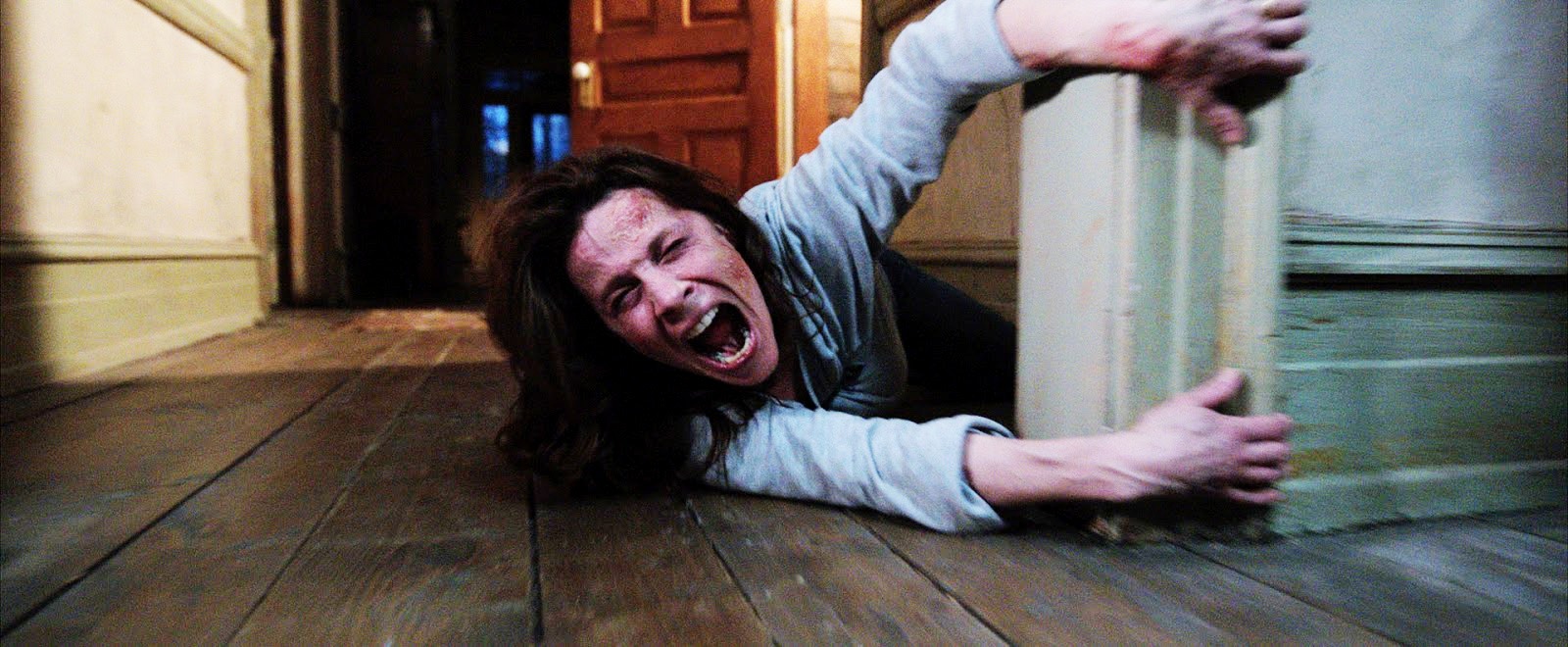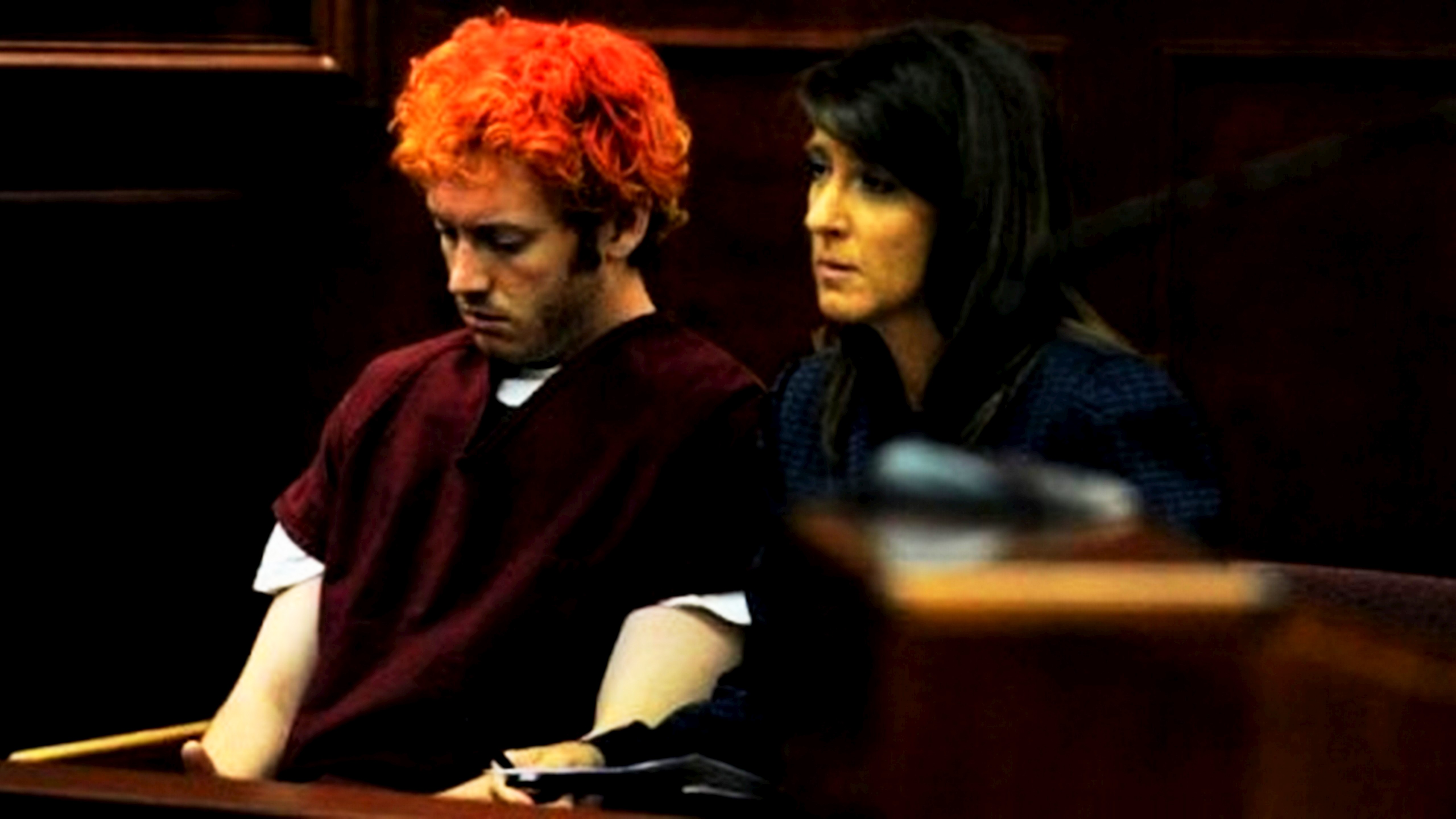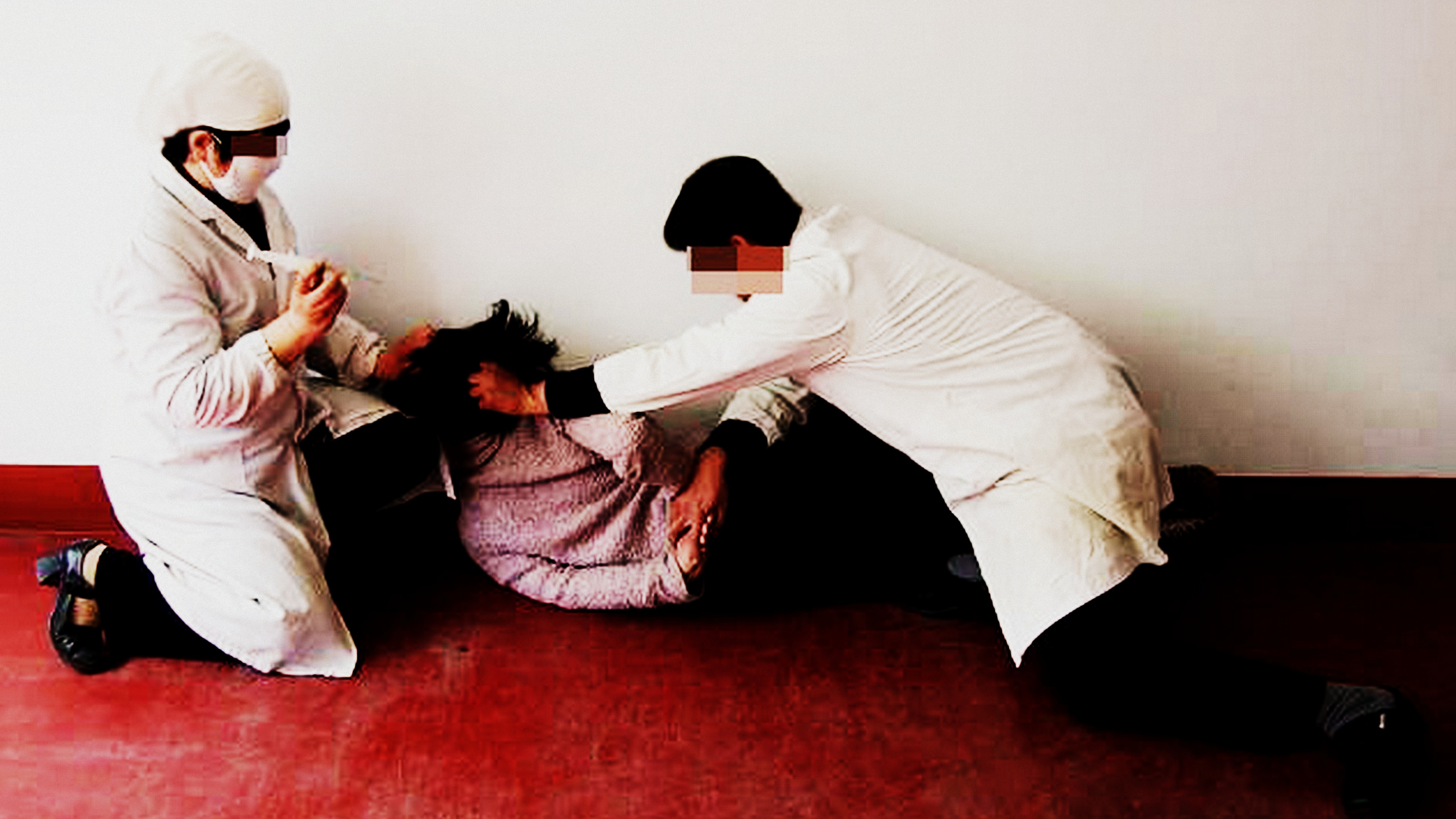
To this vein, bipolar disorder, schizophrenia, depression,
anxiety, autism, cognitive disorder, dyslexia, substance abuse and obsessive compulsive disorder
are just few off a long list of “mental illnesses” that are judged incorrectly.
Click HERE to watch the episode.
Stereotypes are impregnable misjudgments entrenched by ignorance in society. In this vein, bipolar disorder, schizophrenia, depression, anxiety, autism, cognitive disorder, dyslexia, substance abuse, and obsessive-compulsive disorder are just a few off a long list of “mental illnesses” that are judged incorrectly.
Racial discrimination, chauvinism, gender disparity, homophobia, and the stigmas related to mental illness continue to be the most branded statuses in schools, workplaces, political arenas, and even the media. For example, at the beginning of this Law and Order episode, it was easy to assume that Jamie was raped because of her gender, which is labeled as a target for misogyny, chauvinism, or unfairness.
DO THE MEDIA PROMOTE MISCONCEPTIONS ABOUT MENTAL ILLNESS
According to the Canadian Mental Health Association in Ontario, the media describes people with mental illness as “violent, dangerous or unpredictable.” They cite studies that show “the media plays a key role in shaping public opinions about mental health illnesses,” wherein this stereotype is “used to justify bullying” or to deny “housing, health insurance or even jobs” from people. Some movies and books have done the same, and as a result, people with mental illness suffer low self-esteem and difficulty making friends.
In an attempt to hide their illness from a disconcerting public, many do not seek treatment. In the States, more or fewer criminals have used mental illness as a defense against a criminal conviction. The media has capitalized on those stories and unwittingly spread the misconception.
Of course, some remnants of stereotype still exist.
On the other hand, in Canada, Europe, Australia and the United States, the press has a degree of objectivity that is scarce in other countries.”
Note the media has evolved in recent decades. Newspapers, movies, television, and books no longer substantiate pigeonholes about race, gender, sexual orientation, culture, religion, or mental illness. Modern society has implemented groundbreaking reforms that avert the movies, books, or the media from being judicious against race, gender, sexual creed, or religious belief. Of course, some remnants of stereotypes still exist.
On the other hand, in Canada, Europe, Australia, and the United States, the press has a degree of objectivity that is scarce in other countries. That said, the media does have a sturdy influence on the public’s decision-making process. All media reports are repetitive and feature “experts” with “statistics,” which the public, educators, corporations, and other professionals accept. They all use time-sensitive ads to install new ideas.
SHOULD JAMIE BE HELD RESPONSIBLE FOR HER ACTIONS?
Jamie should not be charged criminally, but Cameron and Danny should be forgiven. Jamie had the presence of mind to estimate her actions while doing them. Therefore, she should be held responsible to a certain degree. New protective factors should be provided to assist with her treatment.
Owning up to the family of the victim she killed and the people she injured and realizing her allegation’s impact on Danny and Cameron should be part of her treatment and recovery. Mental illness should not be used to excuse her from remorse. She should be allowed to show that, under normal circumstances, she would have done the right thing.
WHAT ARE THE RISK FACTORS AND PROTECTIVE FACTORS IN JAMIE’S BIOPSYCHOSOCIAL MODEL?
Jamie’s biopsychosocial model: biologically, she was bipolar as the doctor prescribed mood stabilizers. Once she stopped taking her meds, her mental health deteriorated. However, the meds altered her natural behavior by making her passive and dull. Socially she got along with some of her peers but did not fit in her school environment. Her family was middle class. They were often absent from her life. Psychologically, she had low self-esteem, could not cope under peer pressure, and had few social skills.
This caused her to hide her condition so she would not be mocked or ostracized.”
The first risk factor for Jamie was her environment. She wanted to wait for love, but her environment was polluted with impassive sex and peer pressure. Furthermore, other students at her school all had a stigma against people with mental illness. This is what pushed her to change her mind.
This caused her to hide her condition so she would not be mocked or ostracized. The following risk factor was her parent’s absence. As musicians, they traveled often. After she was diagnosed with bipolar disorder, one of them was supposed to supervise her. Her parents were also unaware of her obsession with Derek Lord and had no idea of her crush on Trevor Olson. She lacked parental oversight.
They cite studies that show “the media plays a key role in shaping public opinions about
mental health illnesses” wherein this stereotype is “used to justify bullying” or to deny “housing, health insurance or even jobs” from people.”
If her parents had not left, she would have taken her medication and never “hooked up” in the bathroom stall. There would be no accusation of rape, attempted suicide, or vehicular manslaughter. She did not have the support system that was needed to enable her to maintain discipline. Some people are resilient and can overcome life’s challenges independently, but many are not; they need support.
Jamie’s only protective factor was her best friend, Leslie, who supported her and pointed detectives in the right direction. The detective (Olivia) also helps when everyone wants to throw Jamie under the bus. For the DA, Jamie reminded her of her schizophrenic ex-fiance, who was never saved.
WHY IS MENTAL ILLNESS TREATED DIFFERENTLY THAN OTHER DISEASES?
Demonic Possession: According to Psychology Today, mental illness is viewed differently from other diseases because “earlier beliefs about the causes were linked to demonic or spirit possession.” In the early days of Judaism, Christianity, and Islam, mental illness was often mistaken as demonic possession. Casting out demons is very different from mental illness. This would explain adverse reactions such as withdrawing from victims, fear, and discrimination against people believed to be possessed by demons.
Therefore, she should be held responsible to a certain degree. New protective factors should be provided to assist with her treatment.”
Erratic Violent Behavior: Mental illness can also be treated differently from other illnesses because of the myth that mental health patients are violent. Since the illness is perceived to affect the mind, fear of erratic behavior is common among people, especially when the media perpetuates cases of violent crimes committed by “the mentally ill.” Many scientists believe mental illnesses are neurotic disorders.
Blaming the Patient: Unlike heart disease or Alzheimer for example, in cases that stem from substance abuse, like drug addiction and alcoholism, family members, society, and even the patient may blame the patient for causing their symptoms by not stopping to take the drugs or alcohol. Therefore, they deserve the effects, and no assistance or consideration should be given.
EFFECTS OF DISCRIMINATION AGAINST MENTAL ILLNESS:
- Difficulty finding a place to live or a community to live in.
- Difficulty finding employment.
- Difficulty finding romantic partners to start a relationship.
- Difficulty finding a school or college to attend.
- Difficulty finding insurance.
- Not being able to participate in the community entirely.
- Not being able to immigrate or relocate to another country.
CONTROVERSIAL MEDICINAL TREATMENTS, CELEBRITY INFLUENCE & HUMAN RIGHTS
TREATMENT CHOICE: (a) According to the Citizens Commission on Human Rights, psychiatric treatment can cause “restlessness, hallucinations, excessive urination, confusion, lethargy, dizziness, fainting, loss of coordination, slow thinking, etc.”. In the film, Jamie’s medication could potentially impair liver function when there were no medical tests to diagnose her bipolar disorder. The fact that she did not have a history of violent behavior before taking the meds was also problematic to the treatment.
(b) I place a high value on talent. Some people were born with special abilities that cannot be taught. In the film, Derek Lord’s skill was in music entertainment, not psychiatry. He was biased against psychiatry. Celebrities are responsible for calling controversial laws, culture, systems, and behaviors to question. They have popularity that draws global attention. Lord was knowledgeable about the diagnosis of mental illness, abusive treatment methods, and the side effects of toxic medications. Ironically, considering the other victims, he was mistaken for supporting Jamie not to be blamed for her crimes.
The fact that she did not have a history of violent behavior prior to taking the meds was also problematic to the treatment.”
PUBLIC SAFETY: (a) When Jamie decided to commit suicide, she crashed her car into a crowd of pedestrians, injuring six people and killing a 14-year-old girl (Elena Ramirez). It was then revealed that she is bipolar, but her school psychiatrist was unaware of this. Jamie hid her mental illness from the school to avoid stigma, but in doing so, she endangered the public and the school she attended. (b) There was also misogyny, deviant sexual behavior, and chauvinism in her school. In this equilibrium hung the life of a 14-year-old girl, the future of two promising students, and the safety of six pedestrians.
Because people with severe mental disorders may harm others when they act out, the public must be aware of their illness. However, when the public becomes aware, they must never discriminate against or stigmatize the mentally ill. (c) In the film, psychiatry itself was brought under the microscope. How to diagnose? How to treat? Side effects of medications etc. Derek Lord’s argument that psychiatry is a shot in the dark posed a tricky question to his mostly teen fans. This was also a public safety issue. Since Jamie was a minor, treating her with “toxic medications” was even more controversial.
It seeks reform by giving evidence to legislative bodies and to publicly expose psychiatric abuse,
as well as to use the media, law enforcement and public officials to elevate the respect of human rights and dignity of the mentally ill.”
HUMAN RIGHTS: The underlying theme in this story is the human rights and dignity of the mentally ill. It talks about psychiatric violations and restructuring the field of mental healing, giving patients the right to refuse any treatment based on the potentially toxic nature of the medications used to treat the illness.
It seeks reform by giving evidence to legislative bodies, publicly exposing psychiatric abuse, and using the media, law enforcement, and public officials to elevate the respect of human rights and dignity of the mentally ill. Olivia referred to Jamie as a victim when addressing Carmen’s father, who considered his son “a good kid” who a girl with white privilege seduced. Olivia believed Jamie had PTSD after the bathroom incident. Mental illness does not equal the loss of human rights.
How would the mentally ill majority treat the sane minority? What would the laws be about when that society puts power in the hands of the majority?”
The presumption is that we live in a civilized society with sane people, but a few suffer from mental illness. To this effect, we have stigmatized them and developed various treatments to cure or stabilize their “illness.” What if it was the other way around? What if the society comprised mentally unsteady people and a few were sane? How would the mentally ill majority treat the rational minority? What would the laws be about when that society puts the power in the hands of the majority?
Nowadays, it is impossible to tell who is sane from who is mentally insane. Anyone can accuse another person of being crazy! The prevalent mentality on the subject is rigged with all sorts of biases. Those biases can be substantiated by the violent behavior of people who claim to have a mental disorder.
Depending on the severity, all patients should have bedside assistance available to them to help them take medications and provide am and pm care. Those who are alert and ambulatory should decide whether they want any medication or not. Determining a person’s level of alertness should depend on if they know their name, recognize family and friends, play a role in society (school, work, recreation, dating, creativity, etc.), recognize authority, have a history of violence, is current on the date and time, able to come and go safely or take care of their basic hygiene? If yes, such a person should not be forced to take medications.
It should be their choice from that point. However, the public should be made aware of a person with a severe mental illness who has exercised their human rights by refusing treatment. People with mental diseases should be encouraged to take safety precautions, avoid risk factors, and be monitored by an expert. This way, the public does not overreact to the symptoms of their illness. There should be a clear line drawn between mental illness and demonic possession.
Under the Mental Health Act, Bill 68 controls the involuntary admission of persons to a psychiatric sanitarium. This law is proposed to give psychiatric treatment outside of a psychiatric facility. Bill 68 stipulates that “the purpose of a community treatment is to give a person who has a serious mental disorder a community-based treatment plan and supervision that is less restrictive than detention in a psychiatric facility.” The aim is to treat patients while being mindful that after their condition is “stabilized,” after being discharged from the hospital, the patient may be exposed to risk factors, relapse and have to be readmitted in a mental facility. There should be a continuous treatment course.
A neighbor, family member or friend may determine a person to be dangerous to their self or others therefore the said person may be forcefully admitted into a mental institution.”
This law allows three powerful ways for individuals to be committed to a psychiatric sanitarium for at least 72 hours. The “Form” system involves: (a) A person who behaves contrary to the social norm, regardless of the reason, may grant police the option to commit them to a mental health facility. (b) A neighbor, family member, or friend may determine a person to be dangerous to themself or others. Therefore, the said person may be forcefully admitted into a mental institution.
Some problem this law pose is for sane people to be admitted to a mental institution because their behavior is different or they are misunderstood by someone who disagrees with their lifestyle, religion, or culture. (c) The third and most apparent forming is a list of macho behaviors corresponding to a “physician orders assessment.” This law has a 50/50 chance of helping or harming individuals. In the end, mental illness is a subject that does not get enough attention.
REFERENCES
Citizen’s Commissions on Human Rights / Date: August 9, 2015
- http://www.cchr.org/sites/default/files/education/mood-stabilizers-booklet.pdf
Mental Health Act of Ontario Date: August 9, 2015
- http://www.ontario.ca/laws/statute/90m07
The Canadian Mental Health Association / Date: August 9, 2015
- https://ontario.cmha.ca/mental-health/mental-health-conditions/stigma-and-discrimination/
Psychology Today / Date: August 9, 2015
- https://www.psychologytoday.com/blog/why-we-worry/201308/mental-health-stigma*







